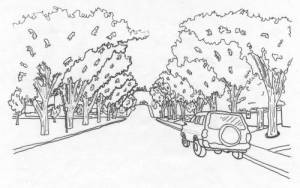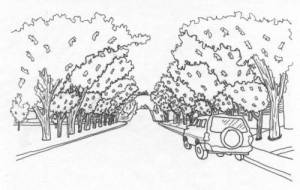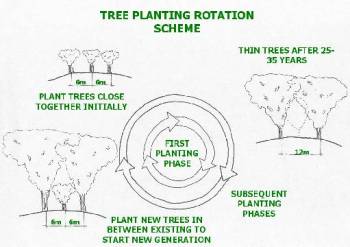TREE PLANTING PROGRAM
The design solution that we came up with was that of a rotational tree planting
program. This rotation is based upon a principle of planned thinning.
When the trees are initially planted, they are spaced close together. This
forces the canopy of the tree up higher allowing more trunk under which people
can walk. This also gives a greater shade cover for the initial decade
of plant growth.
This is followed up in a few decades with the thinning process. The
trees that are removed can then be used for other purposes, such as fire
wood or hobby materials.
(Check out what
other places do with their urban trees - not all applicable to Calgary's
climate, but you get the idea.)
In another few decades, younger trees can be placed in between the older
trees to start the next phase of tree growth.

34 Street NW with the recommended typology

34 Street NW during the replenishing phase
